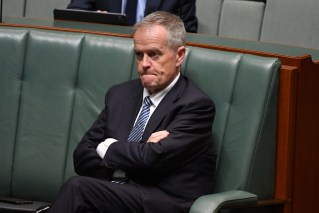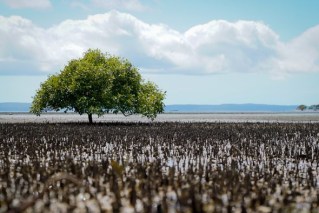How one massive hailstorm almost kept Queensland’s economy in the black
Queensland’s domestic economy slid by 0.3 per cent in the March quarter and one of the biggest contributors was a surprising downturn in general government investment in buildings, plus state and local investment in infrastructure.


Damage from a storm on the Sunshine Coast had a beneficial impact on Queensland's economy.
But had it not been for a hail storm on the Sunshine Coast in November it could have been a lot worse.
That one storm led to more than 5000 insurance claims, with repairs falling into the March quarter and adding to a 2.2 per cent rise in dwelling construction and an increase in renovations.
The Australian Bureau of Statistics data showed Queensland suffered a 4.4 per cent fall in non-dwelling construction on the back of reduced investment in engineering construction and subdued new building commencements.
That was offset by positive signs in a 3.2 per cent rise in purchases of machinery and equipment which is generally seen as business gearing up for expansion.
And while there was an increase in some government spending because of the bushfires, the ABS said there was a “3.1 per cent decrease in general government investment in buildings and state and local investment in infrastructure”.
The contraction is more than double the previous worst, a -2.9 per cent fall during the global financial crisis in 2008, and Conus Consultancy economist Pete Faulkner said the slide would continue for the rest of 2020.
He said his own modelling showed that when the first quarter GSP figures were released later this year the contraction “could be as sharp as 1.4-1.5 per cent which would be followed by a fall of 6.8 per cent in the second quarter which would see GSP down 6 per cent for 2020.”
Before COVID-19 Queensland’s overall economy, including exports, had gone 20 consecutive quarters without a contraction and while the mining sector has continued largely unaffected by the shutdown, prices for commodities have fallen sharply.
Initial Queensland Treasury estimates indicate that around 20,000 Queensland businesses were likely to have been directly impacted by forced closures, with businesses directly and indirectly impacted by these closures employing around 130,000 Queenslanders.
Queensland Treasury’s predicts the state’s economic performance will strengthen in 2021.
Adept Economics economist Gene Tunny said time would tell how long and deep the recession will be.
“In Queensland, thankfully the State Government has now relaxed many restrictions and we can now travel freely within Queensland,” Tunny said.
“Ideally, we’d also open the border with NSW, given there no longer appears to be a compelling public health reason to keep it closed.”












